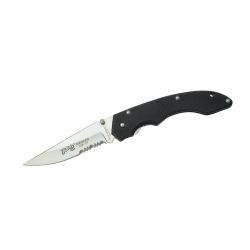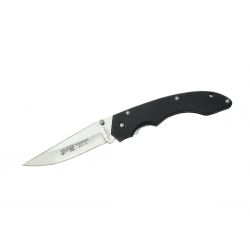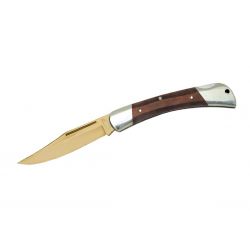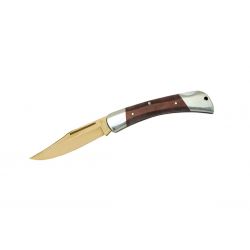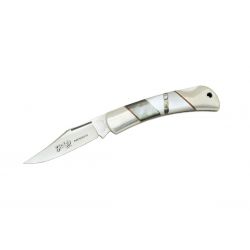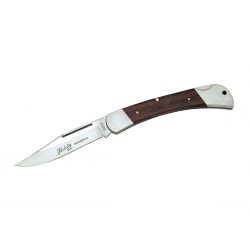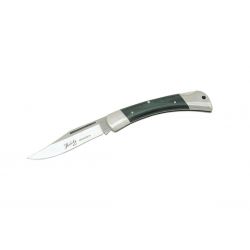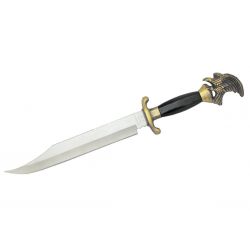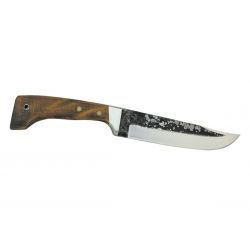
Filter By
Availability
Price
Blade
Blade Length
Lock Type
Stainless steel
Handle Material
Blade Style
Vintage knives
Vintage Knives: A Journey into the Past of Cutlery
Collecting vintage knives is a passion that has captivated enthusiasts for centuries. These tools are not just functional, but also serve as tangible links to history, craftsmanship, and traditions of past eras. A vintage knife can be much more than a simple tool.
Index;
The History of Vintage Knives
Vintage knives date back to past periods, and each model tells a unique story. The evolution of the knife, which began as a simple survival tool, has slowly transformed into an art form over the centuries. The first knives, made from natural materials such as stone, bone, and wood, were gradually replaced by more sophisticated metal models, crafted by skilled artisans. With the industrialization of the 19th century, knife production increased, but the attention to detail and material quality remained high. Today, vintage knives are valued not only for their functionality but also for their historical value and the beauty of their designs.
Vintage knives often feature characteristics that distinguish them from modern models. The traditional forging techniques, the choice of premium steels, and the unique designs of each knife create pieces that tell the stories of past times. Whether hunting knives, kitchen knives, or work knives, each vintage model has a personality that makes it special and sought after by collectors around the world.
Features of Vintage Knives
Vintage knives are known for some distinctive features that set them apart from modern knives. The quality of materials is certainly one of the main reasons: many vintage knives are made from high-quality steels, often treated with methods that are no longer in use today. This makes them durable and long-lasting, but with a natural patina of wear that gives them a unique charm.
Another distinguishing feature of vintage knives is their handcrafted nature. Unlike modern knives, which are often mass-produced through industrial processes, many vintage knives were made by hand by skilled blacksmiths. Each piece is unique and bears the signature of the craftsman who created it. The handles, made from fine wood, horn, ivory, or micarta, are often hand-carved, providing a comfort and aesthetic that modern knives cannot replicate.
In addition, many vintage knives feature intricate designs, with details that reflect the aesthetic trends of the era in which they were made. From hunting knives with carved handles to kitchen knives with finely worked blades, each model has a story to tell, not only from a functional standpoint but also aesthetically.
How to Recognize a Vintage Knife
Recognizing a vintage knife requires some knowledge of the history of cutlery and knife production. One of the first things to do is examine the brand or logo engraved on the blade or handle. Many vintage knives, particularly those made in Europe or the United States, have distinctive marks that attest to their origin and quality. For example, knives made by companies like Buck, Case, or Solingen are easily recognizable by their logos and distinctive style.
Another way to identify a vintage knife is to inspect the quality of the materials used. The blade should be made from high-quality steel that shows no signs of rust or corrosion and retains its sharpness. Handles made from wood or horn should be well-sanded and free from cracks or obvious damage. Furthermore, the wear on the knife, such as scratches and natural patinas, is a sign that the knife has had a long life and passed through different eras, increasing its value as a collector's item.
Vintage Hunting Knives
Vintage hunting knives are among the most sought-after models by collectors. These knives, designed to withstand the harsh conditions of hunting, often feature robust blades and durable handles. Many vintage hunting knives are equipped with wide, sharp blades ideal for skinning and cutting through meat and leather, and handles designed for a firm grip even in damp conditions.
Companies that produced hunting knives over the decades, such as Buck, Puma, and Case, are highly appreciated by collectors for the quality and reliability of their products. Vintage hunting knives, especially those bearing the mark of these historic manufacturers, are often considered true investment items, whose value increases over the years.
Vintage Kitchen Knives
Vintage kitchen knives are also highly sought after by collectors. Kitchen knives, particularly those made in Japan, are known for their quality and precision. Vintage kitchen knives, handcrafted by skilled artisans, often have incredibly sharp blades and handles designed for optimal comfort during prolonged use.
Japanese knives, such as the famous Santoku, are among the most sought-after vintage knives due to their quality and the tradition they carry with them. These knives, made from high-quality steels and handmade, are a perfect example of how a knife can be both functional and beautiful to look at.
Vintage Collectible Knives
Vintage collectible knives are those that not only have great quality and functionality but also a strong historical and aesthetic component. These knives are often limited editions, produced in rare numbers and with special materials, making them even more valuable.
Vintage collectible knives are often associated with prestigious brands such as Buck, Case, Randall, and Solingen, and are considered true works of art. Their rarity, combined with the quality of materials and craftsmanship, makes them valuable objects, both for knife enthusiasts and investors.
The Care of Vintage Knives
Maintaining vintage knives in good condition is essential to preserving their value over time. Taking care of vintage knives requires regular and careful maintenance. It is important to clean the knives after each use, removing any food residue or moisture that could damage the blade. Additionally, to prevent corrosion, it is recommended to apply a thin layer of protective oil to the blade and metal parts.
Vintage knives should be stored in a cool, dry environment, away from direct sunlight and humidity, which could damage the blade and handle. Also, using quality cases or display stands helps to keep the knives protected from dust, impacts, and accidental damage.
Where to Buy Vintage Knives
Purchasing vintage knives requires some knowledge of the market and the history of cutlery. There are numerous specialized online stores and markets where you can buy high-quality vintage knives, but it’s crucial to pay attention to the provenance and quality of the piece. Additionally, knife fairs and auctions are ideal places to discover rare and unique pieces, often at competitive prices.
Conclusion
Collecting vintage knives is a fascinating journey that allows you to explore the past through the beauty and functionality of these tools. Whether hunting knives, kitchen knives, or collectible pieces, each item tells a unique story and offers a tangible link to a bygone era. The care and preservation of vintage knives are fundamental to maintaining their value and ensuring that they can be passed down to future generations. If you are passionate about vintage knives and wish to start or enrich your collection, explore the market with attention and preparation, and look for pieces that not only have economic value but also a story to tell.
▷ Read More
Read less
Active filters
- Brand: Herbertz













































